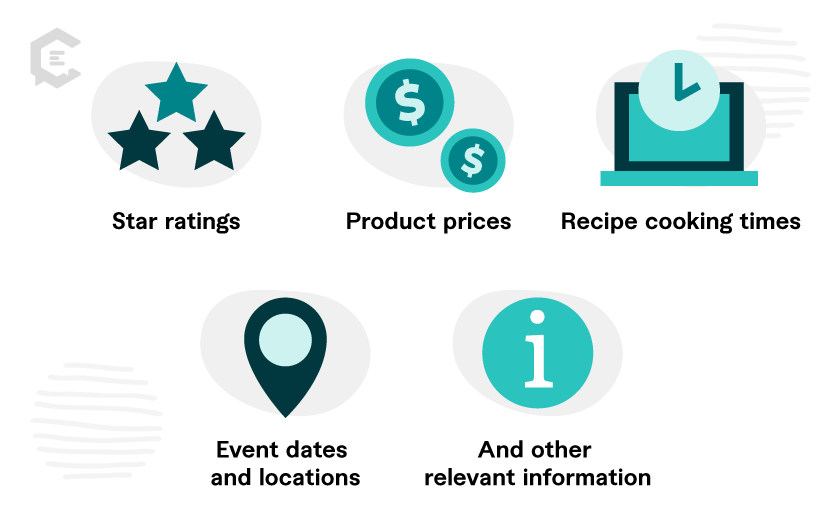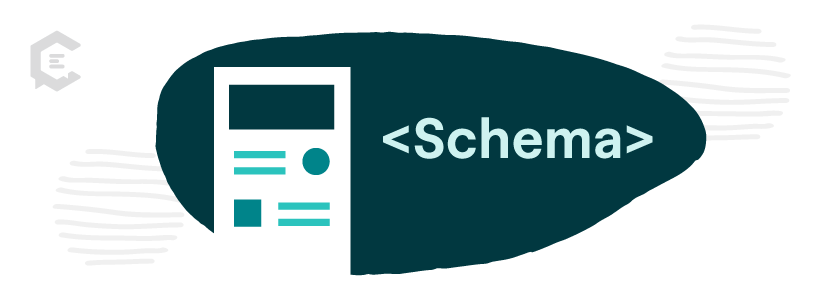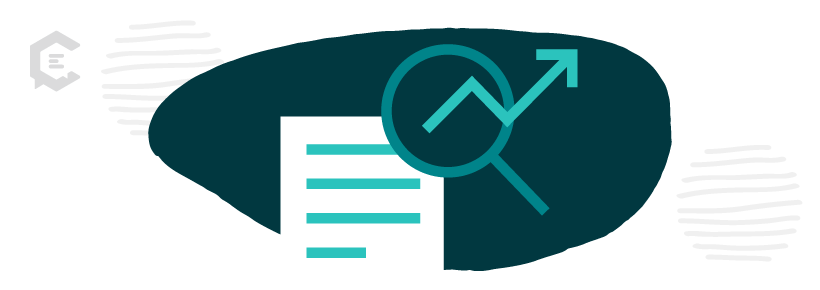What are rich snippets?
A rich snippet is a search result that provides additional information beyond the usual title, URL, and meta description. They’re more visually appealing and, as a result, often have a higher click-through rate. Typical examples are reviews, how-tos, and recipes.
Typically, rich snippets are generated using structured data markup. That’s a specific format that allows search engines like Google to understand the content of a webpage better. By adding structured data to your website’s HTML code, you provide explicit cues about the data on the page.
These additional details can include:
- Star ratings
- Product prices
- Recipe cooking times
- Event dates and locations
- And other relevant information
The goal is to make the search result more attractive to users. The more attractive it is, the more you increase the likelihood of click-throughs to your website. It’s essential to follow the guidelines provided by search engines for structured data markup to ensure proper implementation and avoid any penalties for incorrect or misleading usage.
Why are rich snippets so important?
Rich snippets are a fantastic way to increase your click-through rate if you can use them. They add an extra element that helps your result stand out. Getting a rich snippet attributed to your site can:
Enhance the appearance of your search listings.
Increase User experience by reducing the need for them to visit multiple sites for basic details.
Differentiate you from your competitors by having a higher-quality listing.
Appear more prominently with voice search, which gathers data from featured snippets (similar to rich snippets).
Improve click-through rates and user engagement, which can indirectly contribute to your website’s SEO.
Optimize your info for mobile devices where space is limited.
Rich snippet terms to know
Along with “rich snippet,” there are a few supporting words you should know.
The Knowledge Graph was Google’s first foray into creating rich snippets. Any time you search for something and get a card of information on the right-hand side of your desktop screen or at the top of a mobile page, you’re looking at the Knowledge Graph at work. That card that appears is called a “knowledge panel.”
Schema is extra code you add to your website page to tell Google (and other search engines) more about who you are or what you offer. Schema.org provides a collection of schemas (or markup types) that webmasters use to annotate different types of content.
Structured data refers to a standardized format used to organize and label information on web pages in a way that makes it easily understandable for search engines. It provides explicit cues about the content and context of the data. That enables search engines to interpret the information more accurately and present it in more informative ways in search results.
Keep it Simple with Schema
It’s really easy to get super overwhelmed by the sheer number of possible things you can tell search engines about you. Remember that you don’t have to use all the available properties. You can use as few or as many that make sense for your business. Start with the most important and add from there.
Some of the most essential, basic properties are:
Name
Location (only applicable for some)
Phone number
Website
Logo
Social profiles
How to find out if you can use rich snippets on your website
Unfortunately, not everything qualifies for “rich snippets.” There are specific categories of results that can use rich data:
Types of rich snippets
Products
Reviews
FAQ
Software
How-to
Books
Recipes
News
Events
Jobs
Media/entertainment
For the complete list and a deep dive into how to implement these, check out Google’s search gallery. You can use them as long as you’re not making things up to get a rich snippet.
How to test your rich snippets
Once you implement your code, we highly recommend using a developer to help you test them.
Google has created a tool just for rich snippet testing called the Rich Results Test.
Input your page URL with your rich snippet code to see if it’ll output in the SERPs. This tool is handy because it tells you why your code doesn’t work if there’s something wrong. Rich Results Test tool also allows you to input your code before installing it on your webpage to see if you’ve got workable, error-free code.
Compare rich snippets with your competitors
Want ideas and examples of what you can do with rich snippets? Head to Google and start scoping out your competitors. When you search relevant industry terms/questions, are you seeing competitors pop up with rich results? Do those competitors have something you want in their knowledge panel, too?
It’s easy to run your competitor’s page through Google’s Rich Results Test to see what schema they use on any of their pages. That can include product pages, review pages, blog articles — whichever page outputs a rich snippet you’re coveting.
Rich Snippet resources
Coding and incorporating HTML may not be your forte. Rich snippets are a valuable tool to increase your engagement and click-through rate, and they are absolutely worth the time. Here is a list of links to guide you through the more complex aspects of qualifying for rich snippets.
Schema.org
Google’s Rich Results Test
Rick snippet next steps
Rich snippets are beneficial for both users and website owners. For users, they provide more relevant and valuable information directly in the search results. That allows them to make informed decisions without clicking through multiple pages. For website owners, rich snippets can increase click-through rates and improve organic traffic by making their listings stand out.
Rich snippets won’t do you any good if you don’t have great content to back them up. Talk to a content specialist at ClearVoice about developing a content marketing strategy for your brand today.






